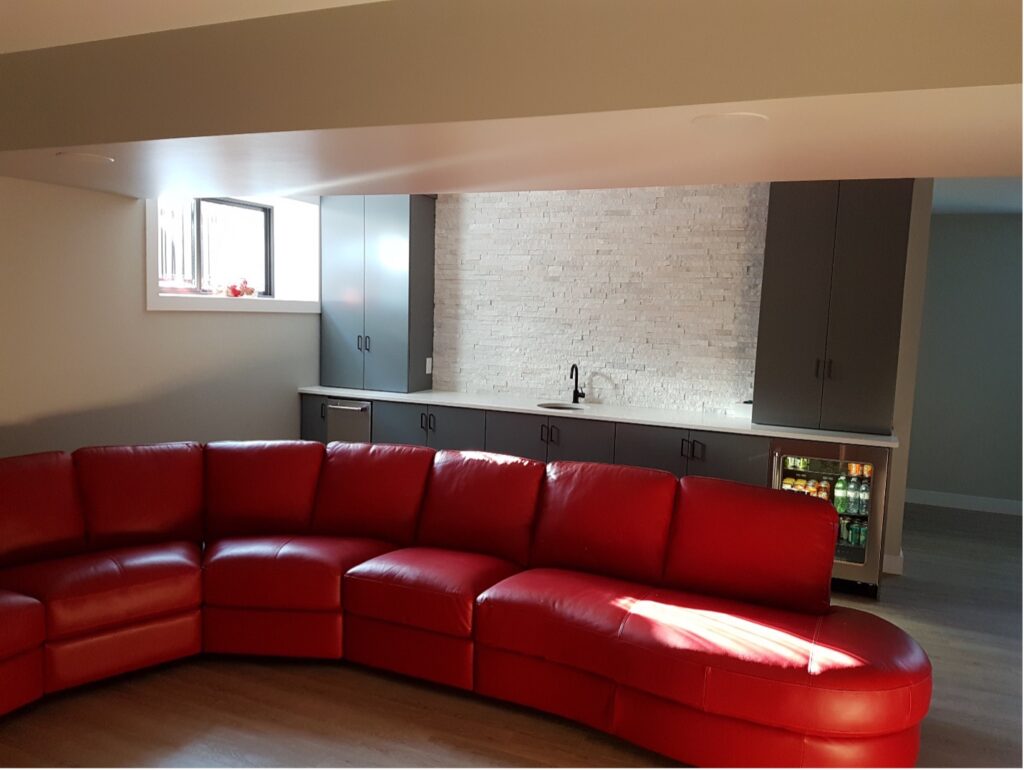Basements have a reputation for being cold, dank, and uncomfortable. Even with a good heating mechanism they can be uncomfortable places. Why?
Mean Radiant Temperature
The answer has to do with Mean Radiant Temperature (MRT). The mean radiant temperature basically refers to the average temperature of all the surfaces surrounding you at any given time. This is different from the temperature on your thermostat which measures the ambient, or air temperature in the room. The radiant environment is important because roughly half of how you experience comfort is determined by the radiant environment.
The radiant environment explains why you feel cold in winter when you stand in front of a window and why many basements feel cold. Basement floors in Manitoba have traditionally been poured in place without insulation to protect it from ground temperature. With no insulation under the basement floor, the floor tends to take on the temperature of the earth beneath it. In Manitoba that typically means that your basement floor could be from 5 – 7 degrees Celsius.
Concrete basement walls will typically range from around 7 degrees near the floor to below freezing near the top on some of the colder winter days.
So, let’s say that you in an uninsulated basement and it’s the middle of January. You set the furnace temperature to 22° C but still feel cold. By measuring the average temperature of all the surfaces in the room including the floor, walls, windows, and ceiling, we may find that the average mean radiant temperature is around 10 degrees. So, although the air temperature is set at 22° C, you will feel like the temperature is only 16° [(22+10)/2 = 16]. To feel comfortable, you will need to set your ambient air temperature up to 32°.
The Value of Insulation
Now let’s say that you insulate the concrete walls but leave the basement floor untouched. If all goes well your mean radiant temperature would now be closer to 16°. Now when you turn the thermostat to 22° it would feel like 19°. Almost comfortable.
If you add 3.5” of insulation over top of the basement floor you will raise your MRT to 21°, almost the temperature that the thermostat is set to. In fact, it is quite possible that the basement will now feel warmer than the main floor as the larger windows on the main floor could easily result in your MRT being lower than the basement. Imagine a basement that is more comfortable than the main! A basement floor that doesn’t feel cold.
Now imagine how much less your furnace would have to run to make your basement comfortable, and how much money you could save as a result.
How We Create Warm Basements
At Dueck Builders we ensure that your basement is comfortable all year round. We do this by using Insulated Concrete Forms (ICFs) such as Logix ICF for the walls.
We install a minimum of 3.5” of AMC’s Halo Subterra under the concrete to ensure that basement floors are kept close to room temperature.
In one of our homes a real estate agent was raving about how wonderful it was to have in-floor heating. The funny thing was, this home had no in-floor heating. It did however have an insulated floor close to room temperature that felt like a warm floor.
Other key aspects of comfort include a good HRV. See Why should I have an HRV
For some excellent resources see Jonathan Bean, and Allison Bailes: Energy Vanguard – Naked people need Building Science. For the scientific calculations see Robert Bean’s Article.

